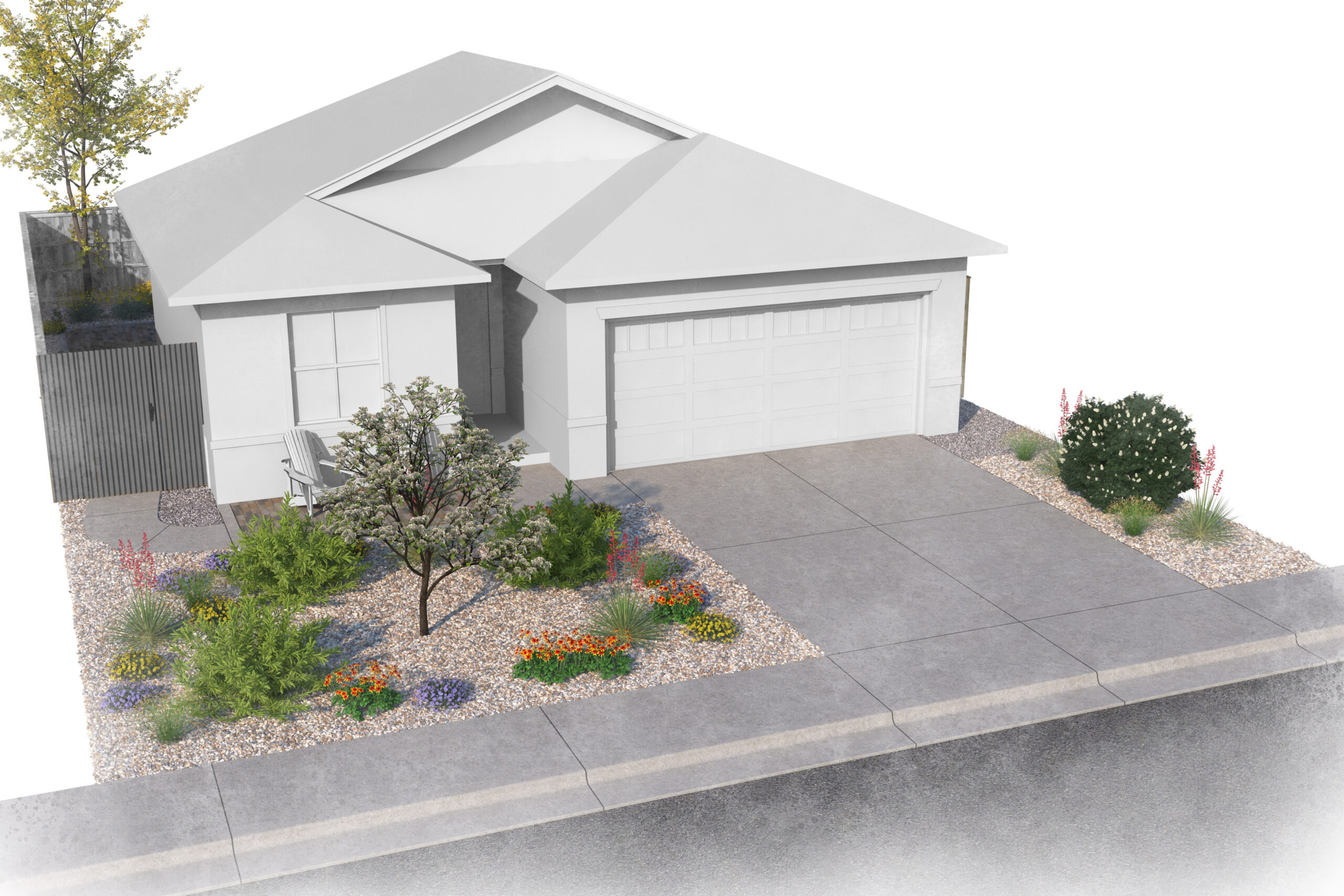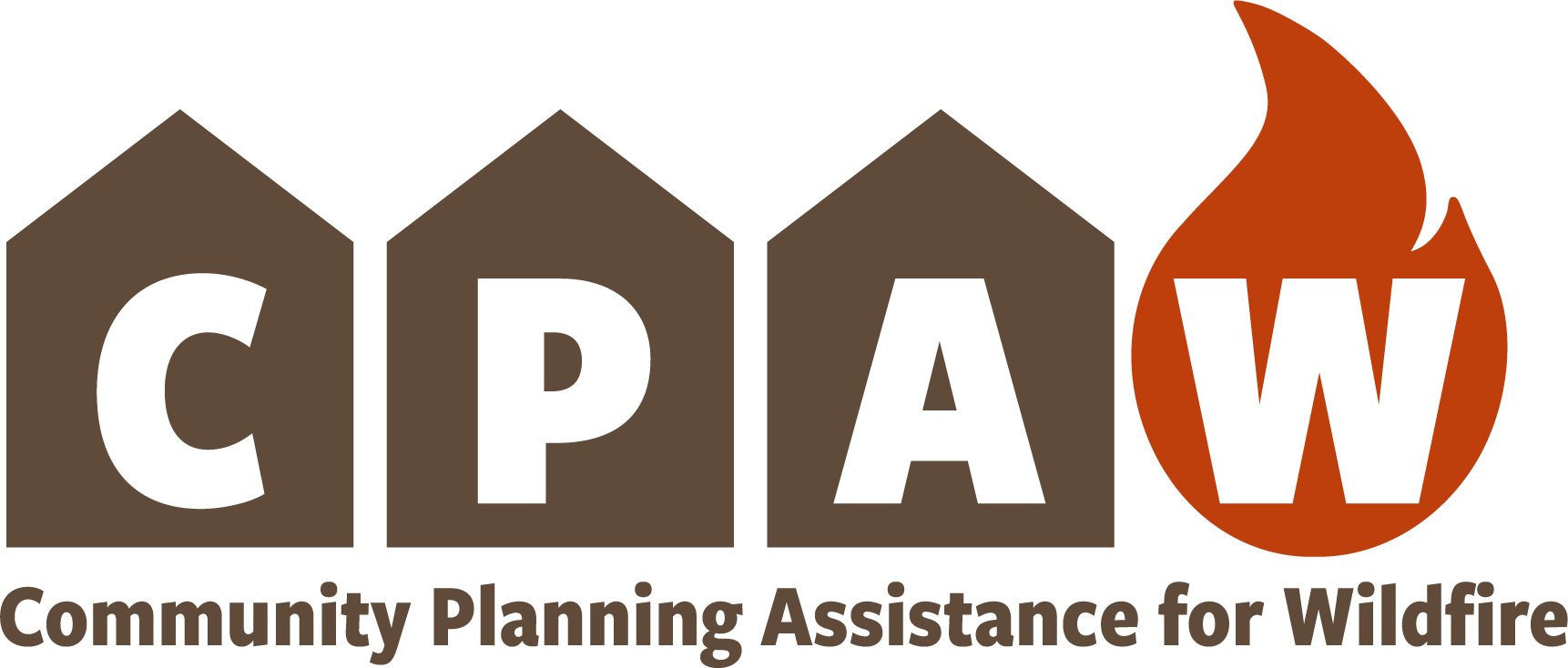
Landscaping for water and wildfire webinar and FAQ
This webinar from May 15, 2025 explores how crossover landscaping codes can do double duty to reduce fire risk and encourage water conservation in your community, hosted by the American Planning Association and featuring speakers from Headwaters Economics. An FAQ below the video includes answers to some of the questions raised by attendees.
FAQ
Several questions raised during the webinar, with answers from the CPAW team:
“Hardscaping” is a landscaping approach built on principles established by xeriscaping, a practice that seeks to reduce water consumption by promoting the use of drought tolerant plants and limiting the amount of surface area dedicated to plants that need a lot of water. “Hardscaping” in this context refers to any landscape coverage not made of plants, such as rock or gravel.
These landscapes shouldn’t be impermeable surfaces like parking lots. While some hardscaping, such as concrete, may generate more runoff from your landscape, there are many other types of hardscaping that will allow for more water absorption. Small rock mulch – two different types of which are squeegee or pea gravel – is very permeable, even more so than wood mulch, which can form a mat over time and become less permeable.
Regardless, you can incorporate design features into your landscape that retain or absorb water, such as rain gardens, dry creeks, or bio swales. Placement of these features is key – installing them too close to buildings can damage foundations.
There are many factors at play in increasing or decreasing the urban heat island effect. Landscapes with minimal plant coverage could see an increase in surface temperatures. But careful consideration in plant design can mitigate these effects. For instance, by adding plants in appropriate areas, the heat island effect can be minimized. We recommend a minimum of 50% mature plant coverage on a lot, but more coverage is often better.
The best science on wildfire risk reduction shows that there should be no combustible materials of any kind within zero to five feet of your home. This recommendation comes from years of detailed studies that examine how homes burn, and applies to potted plants, trees, garden boxes, wood mulch, wood piles and furniture, among other things.
However, this can be a difficult regulation to implement in communities. Any plants in this zone should be well-watered, although that recommendation may increase your water use in a drought-prone landscape.
If plants are included in this zone they should have a very high moisture content, such as an ice plant or cactus. A well-watered vegetable garden would likely be a better option than some poorly maintained plants. However, flammability rating of these types of vegetable garden plants is very uncertain – and garden boxes are often built of combustible material — so it is still an unknown risk.
Communities may consider other benefits of regulating plants within five feet of a home. For instance, hardscaping within five feet of a home can deter termites and rodents; avoiding planting trees close to structures can also protect your foundation, roof and pipes from damage by branches or roots.
The research on the zero-to-five-foot noncombustible zone around homes applies in all circumstances, even when and especially if homes are very close together. It is particularly important in dense neighborhoods like these to use noncombustible construction materials, such as concrete siding and Class A roofs, which will reduce the risk of a fire spreading from home to home.
In some cases, this is a challenging regulation to implement, particularly in neighborhoods with smaller yards. Communities should remain flexible and consider the tradeoffs of implementing regulations that can have a disproportionate impact on property owners with smaller lots.
Cedar privacy fences can be particularly hazardous in dense neighborhoods. Instead, homeowners should use a nonflammable alternative like metal, especially where the fence connects to the house.
Creative lot design can be another way to reduce fire risk in dense neighborhoods. Communities could take a “zero lot line” approach, which eliminates setbacks between buildings and lots and attaches neighboring houses using a fire wall. These lots could then increase yards at the opposite end, allowing room for a five-foot noncombustible zone and other landscaping.
The crossover landscaping principles outlined in the webinar apply to all types of homes and structures – whether they are apartment buildings or single-family homes. Multi-family buildings, however, tend to have more fire protection measures, such as sprinkler systems, than a typical single-family home. This suggests that multi-family buildings, depending on the building code requirements, could be more wildfire resilient than detached homes.
It’s hard to say that all invasive plants are more flammable. However, in some states, such as Colorado and Hawaii, this is often the case. The 2023 fires in Maui, for instance, were largely fueled by invasive grasses in abandoned plantation lands.
